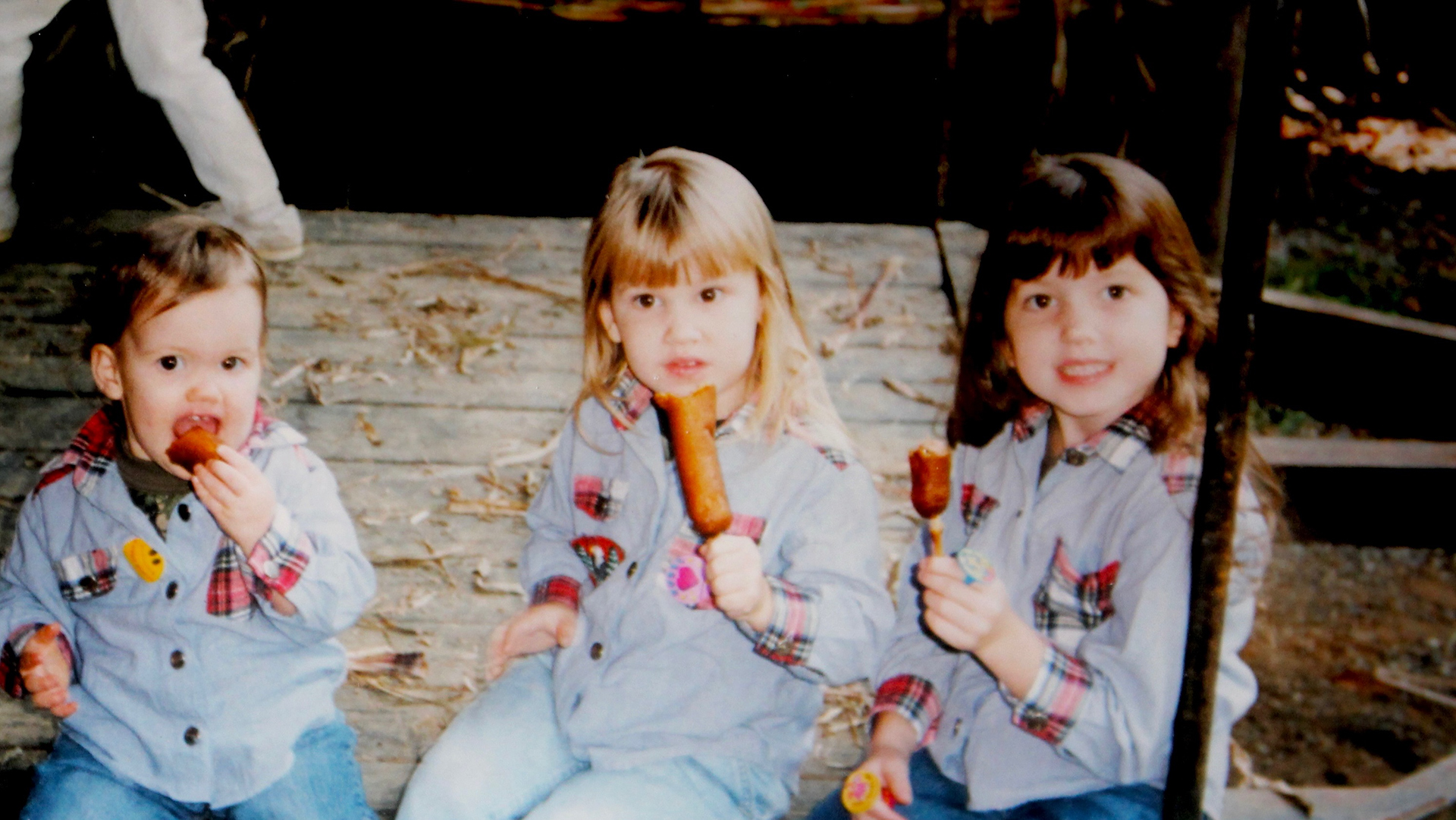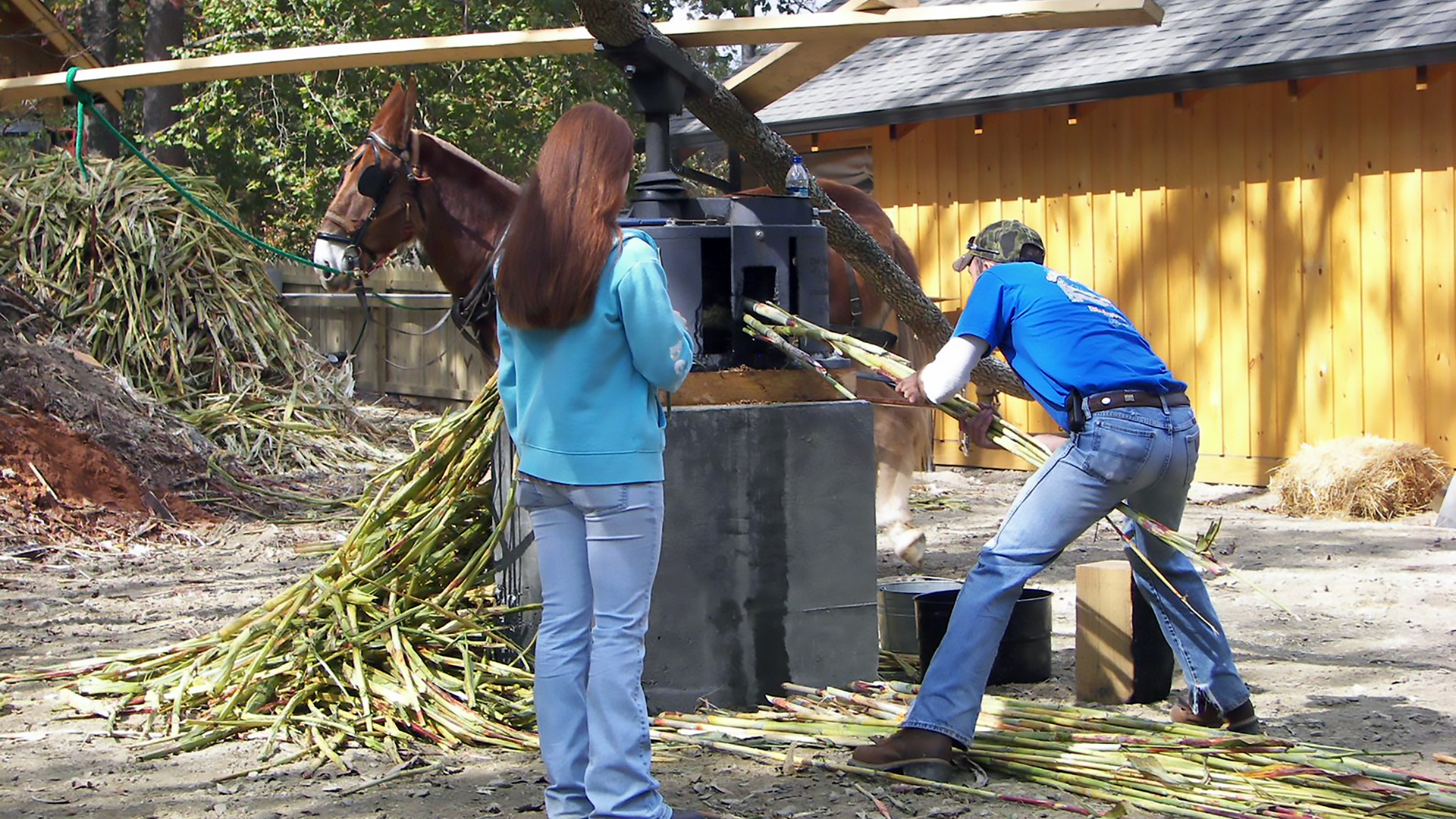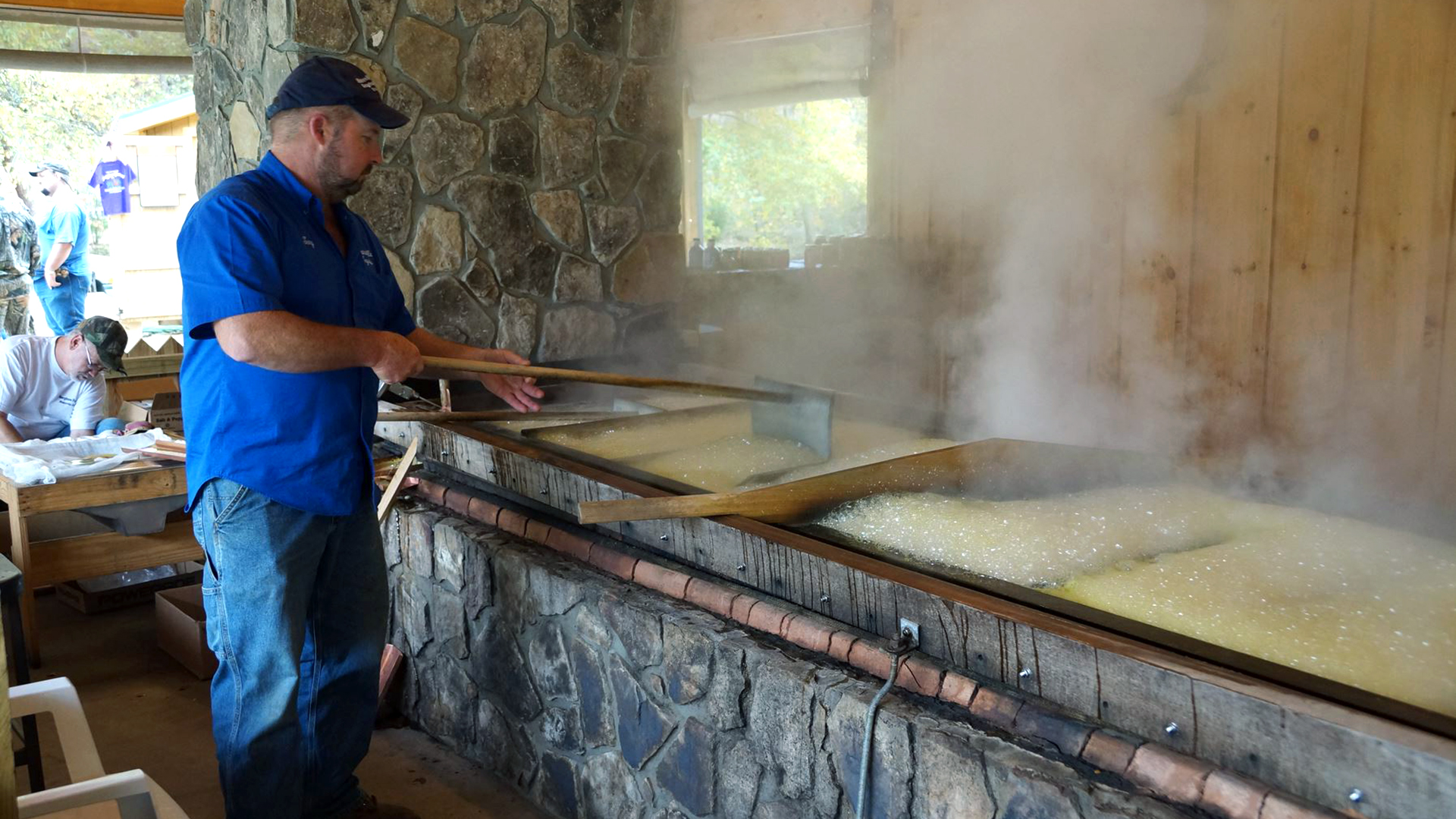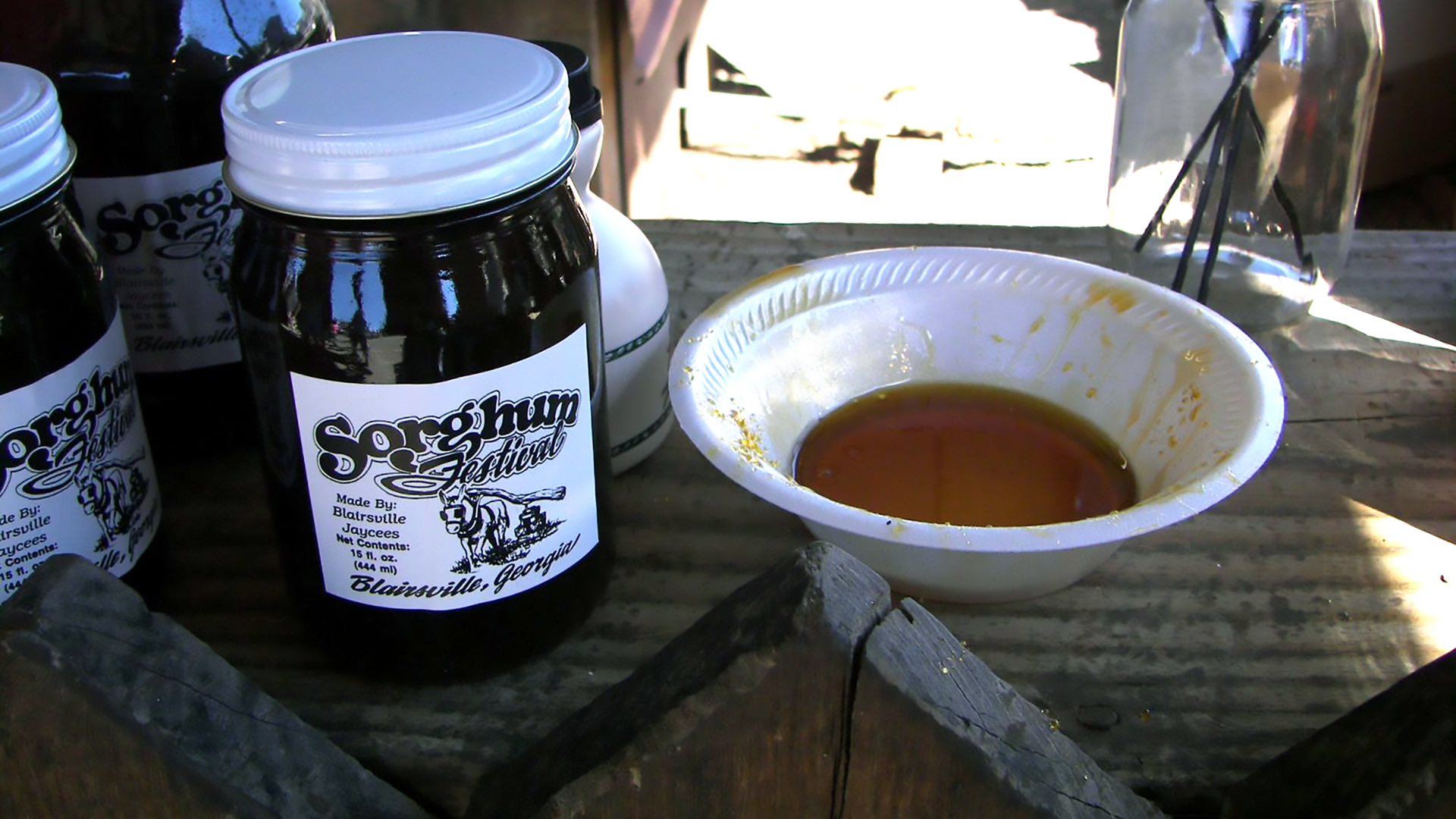
A Whole-Town Family Reunion
In the mountain town of Blairsville, Georgia, an annual Sorghum Festival has celebrated Appalachian culture for over 50 years. And it kicks off again this weekend.
“Hurry, hurry, don’t be slow, chicken in the bread pan pickin’ out dough, no, child, no...”
—Square-dance call
For some kids, it is Christmas, for others maybe another holiday or their birthday, that really gets them energized—a sugar-high just from a thought.
For me, it is the smell of sorghum cane juice turning into syrup. It is knowing the weather in north Georgia is at its utmost perfect: “leaf-looker” season. And it is knowing exactly where I will be the second and third weekends of October: the Blairsville Sorghum Festival followed by Saturday night square dances—then a trip to Waffle House. In my younger years, the festival was something, regardless of where I was or what was happening in my life, that was a certainty.
The taste of sorghum is nostalgic. It nods toward a time when acquiring sugar wasn’t a quick errand because sugar wasn’t an option at all. Sorghum is the flavor of a region: Southern Appalachia. Lucky for us, the cane grows well in the valleys of our area, and the syrup has complemented our biscuits for hundreds of years. Using a biscuit to sop up sorghum and butter adds the perfect amount of sweet with just the right amount of bite.
We watched puppets dance to songs we will never ever get out of our heads such as “I’m Gonna Be (500 Miles)” by the Proclaimers and Celine Dion’s classic, “The Prayer.” We fought over the “good” partners for every square dance round—someone who wouldn’t miss a beat when the caller said to roll the barrel one time. And, most importantly, we grew up watching our parents and close family friends laugh, swear, and sweat on their off days to give back to the local community.
Junior Bridges, one of the founders, told me a decade ago that the Blairsville Sorghum Festival began in 1969 with a few motivated people and a funeral tent on the town square. Bridges remembered wearing “old-timey” clothes and selling syrup he and his parents helped make, which is a tradition the organization upholds today. Because of the event’s early success on the square, Bridges said the local government gave the Blairsville Jaycees—who are now known as the Blairsville Sorghum Syrup Makers—a piece of land on which the organization built a cooker in 1971. Fort Sorghum, a memory-packed place that was torn down in 2018, was then built on the donated land in 1973. The founding group’s passion for the community has withstood the last fifty-four years, and the festival now spans the majority of Meeks Park.
The festival and those who lead it taught us—those pizza-box-sliding, biscuit-scarfing kids—how to love, care for, and improve our Southern Appalachian community.
The festival moved to Meeks Park in 2008 and is now organized by Enotah CASA for Children with the Blairsville Sorghum Syrup Makers. The park currently homes the old stage, a sand pit and climbing pole for festival games, and a wood-fired continuous evaporator for syrup making. Since the beginning, all profits from the festival help local families who are in need and fund scholarships. The festival also acts as a staple fundraising event for many other local organizations. During the festival, countless vendor booths represent groups such as the Diamond Club, Kiwanis International, and 4-H Club—all also working to raise funds for various youth opportunities. Paying the entry fee or buying a sausage biscuit at the Sorghum Festival—the biggest fundraiser in Union County—could provide a local child with their only Christmas present for the year.
Conversations about community service often cite the need for reciprocity, and every aspect of this festival lives out that term. From its founding to today’s larger festival, the Blairsville Sorghum Festival embodies reciprocity. Everyone benefits. Time and effort from locals contribute to multiple weekends’ worth of fundraising opportunities that then funnel right back to the community. The festival and those who lead it taught us—those pizza-box-sliding, biscuit-scarfing kids—how to love, care for, and improve our Southern Appalachian community. And how to have a good time while doing so. Every one of us helped our Sorghum Festival families strip fodder in the cane fields, working on local farmers’ land to start the sorghum syrup process. I even convinced my sorority in college to strip fodder for community service hours. The work is not necessarily taxing for the able-bodied, but it does take time and leaves lots of seeds in your hair. Stripping and loading cane may not be the most glamorous aspect of the festival process, but it is a pleasant, productive time. Lots of stories get told while the work gets done.



Stripping fodder might not be glamorous, but the square dances are. They happen both Saturday nights of festival weekends. To participate in a square dance is to live Appalachian culture. To hear calls that have not changed with the times. To dance with a community who, mostly, cares about the cultural roots of the performance. Aside from the new speaker systems in our old “red gym,” square dances cannot rightly be called “modern.” John Nix, who often performed with “John Nix & The Country Cousins,” used to provide musical accompaniment to Mike Arnold’s polished square dance calls, and this year’s dances will feature The Jim Wood Band. It truly is the people who make this time of year so special, who keep these traditions alive and accessible for us all.
People like Mike Jones (my dad and the best square dancer of them all) and Terry Kane have energized this festival for most of their adult years. People like Lisa Kane who bake all of the sorghum cookies and muffins help ensure all of the details have been ironed out before the festival begins, and keep everyone in line during the festival. People like Angie Dills, Ginger Carey, and Kim Bridges, who taught those pizza-box-sliding kids how to count money and give correct change in order to pop us by the front gate or in the T-shirt booth—but who also didn’t tell us we would need to hold elderly people’s hands a little tighter to draw the smiley faces that showed they paid. People like Brent England and Aaron Dills who pushed us kids up the climbing pole when we were not yet sure how to climb. There are so many wonderfully kind humans who have kept this festival afloat since 1969. I could go on and on with names of people who taught me important life lessons in seemingly inconsequential moments, or I could elaborate upon the matriarchal leadership themes. Suffice it to say, though, that I cannot imagine my childhood without this thoughtful and fun family—the essential characters of the bildungsroman I will never write.
Every October the sorghum cane needs to be stripped, ground, and made into syrup, and that need brings everyone together.
My dad calls the festival “a family reunion where he gets to see people he might meet on the road but not see all year.” The Sorghum Festival is all about community: everyone walks away with something—a new pottery piece from a local artisan, barbecue and sweet tea from the baseball team, a new awareness of local history, or something else.
Every October the sorghum cane needs to be stripped, ground, and made into syrup, and that need brings everyone together. And the festival tells us that—despite changes in the world—the old-fashioned farming, syrup making, and family bonds will continue on for another half of a century
“…let’s roll the barrel one time, put that sweet little lady on the inside, ahh that’s close enough now, put her back out, hug her once, kiss her twice, and bring her back to the next square dance.”
Mikala Jones-Wall joined Young Harris College’s Department of Literature and Languages in 2020 soon after earning her master's degree in English Composition and Rhetoric from the University of Massachusetts Amherst. She holds a bachelor's degree in English Literature from Young Harris College and is proud to be from Union County, Georgia. Beyond reading and writing, Mikala also enjoys hiking, learning new crafts, and pretending to leash-train her cat, Hadley.

